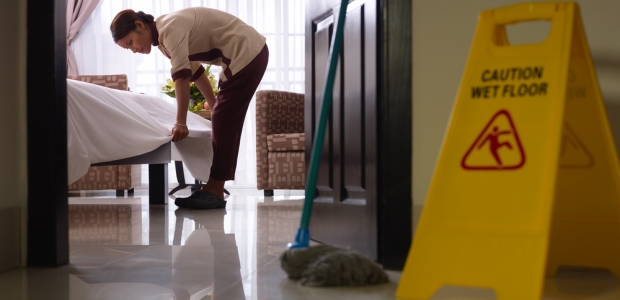
California's Housekeepers Ergonomics Standard Takes Effect July 1
The regulation requires employers in the hotel and lodging industry to implement and maintain an effective Musculoskeletal Injury Prevention Program so employees won't be hurt from tasks such as lifting mattresses, pulling linens, pushing heavy carts, and slipping, tripping, or falling while cleaning bathrooms.
Cal/OSHA will begin enforcing its new ergonomics standard to protect hotel housekeepers on July 1. The first ergonomic standard in the nation written specifically to protect hotel housekeepers, it was approved March 9 by the Office of Administrative Law.
"Hotel housekeepers have higher rates of acute and cumulative injuries compared to workers in other industries, and data shows those injuries have steadily increased," said Cal/OSHA Chief Juliann Sum. "This regulation requires employers to identify, evaluate, and correct housekeeping-related hazards with the involvement of housekeepers and their union representative."
The regulation requires employers in the hotel and lodging industry to implement and maintain an effective Musculoskeletal Injury Prevention Program (MIPP) so employees won't be hurt from tasks such as lifting mattresses, pulling linens, pushing heavy carts, and slipping, tripping, or falling while cleaning bathrooms. These programs must include:
- Procedures to identify and evaluate housekeeping hazards through work site evaluations that include housekeepers' input
- Procedures to investigate housekeepers' musculoskeletal injuries
- Methods to correct identified hazards
- Training of employees and supervisors on safe practices and controls and a process for early reporting of injuries to the employer
The new regulation came about after hotel worker representatives presented a petition six years ago to the Occupational Safety and Health Standards Board requesting a new standard to regulate specific hazards faced by hotel housekeepers. Cal/OSHA convened open advisory meetings during a three-year period to gather information and determined that existing regulations did not adequately address the hazards they face.